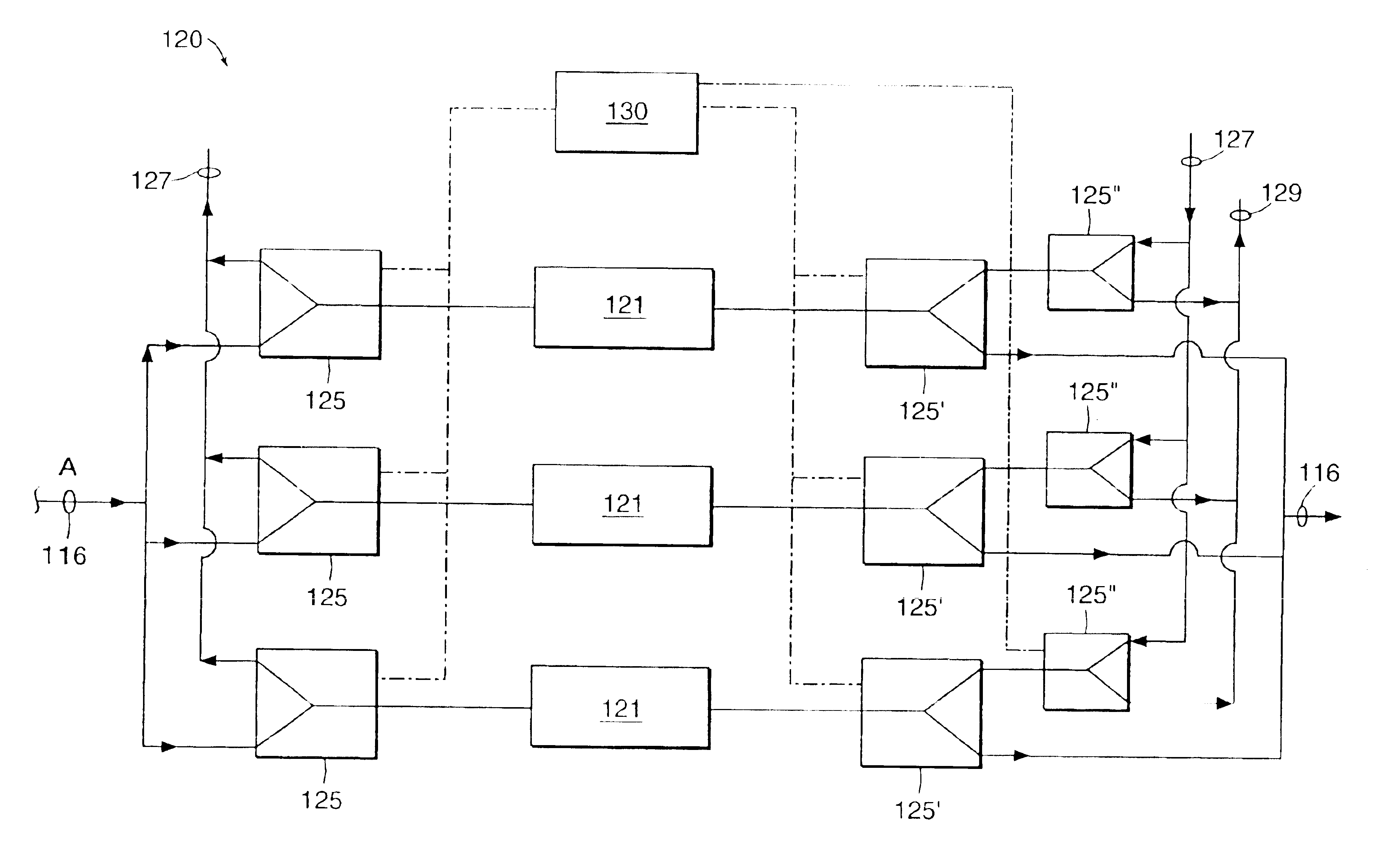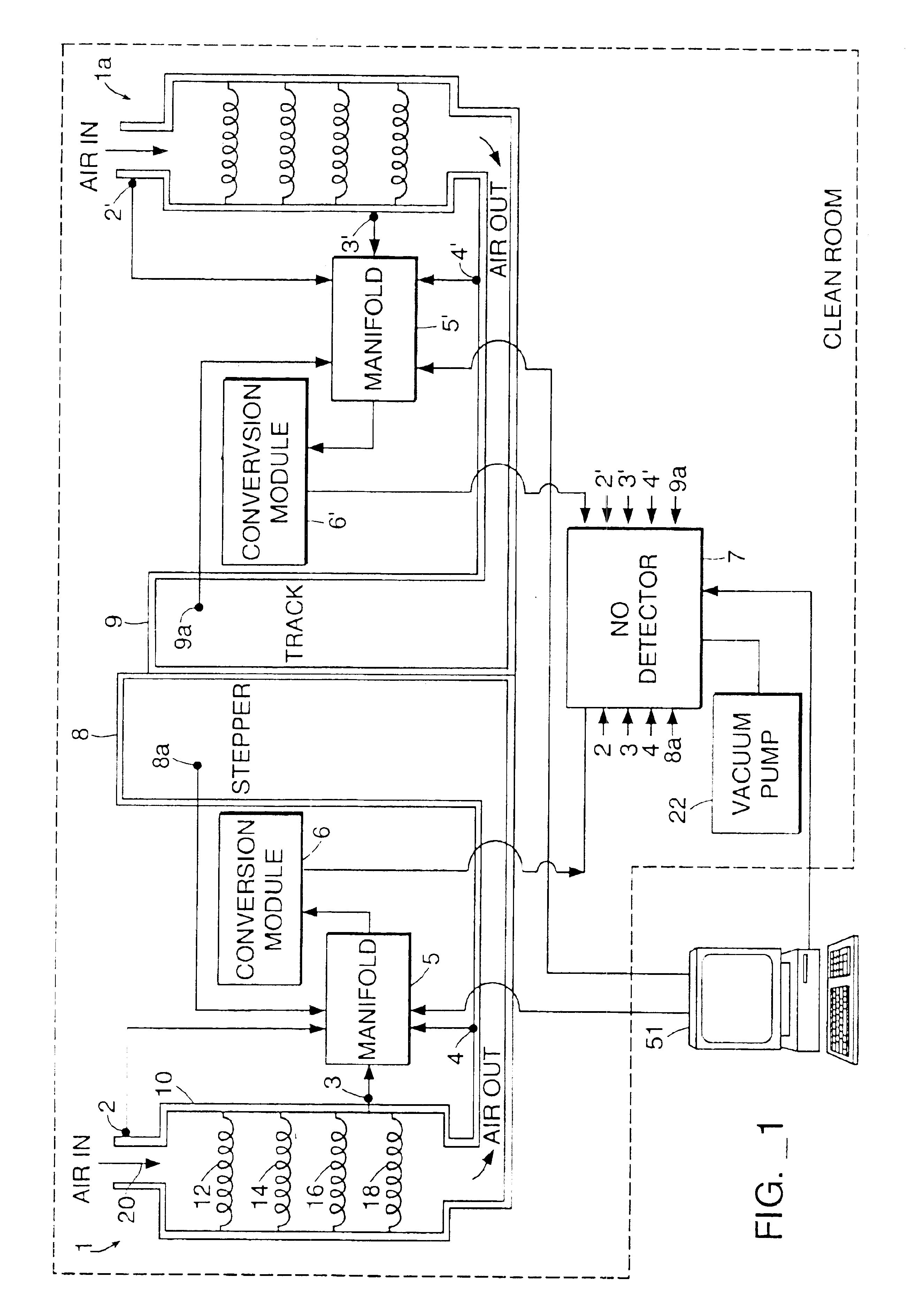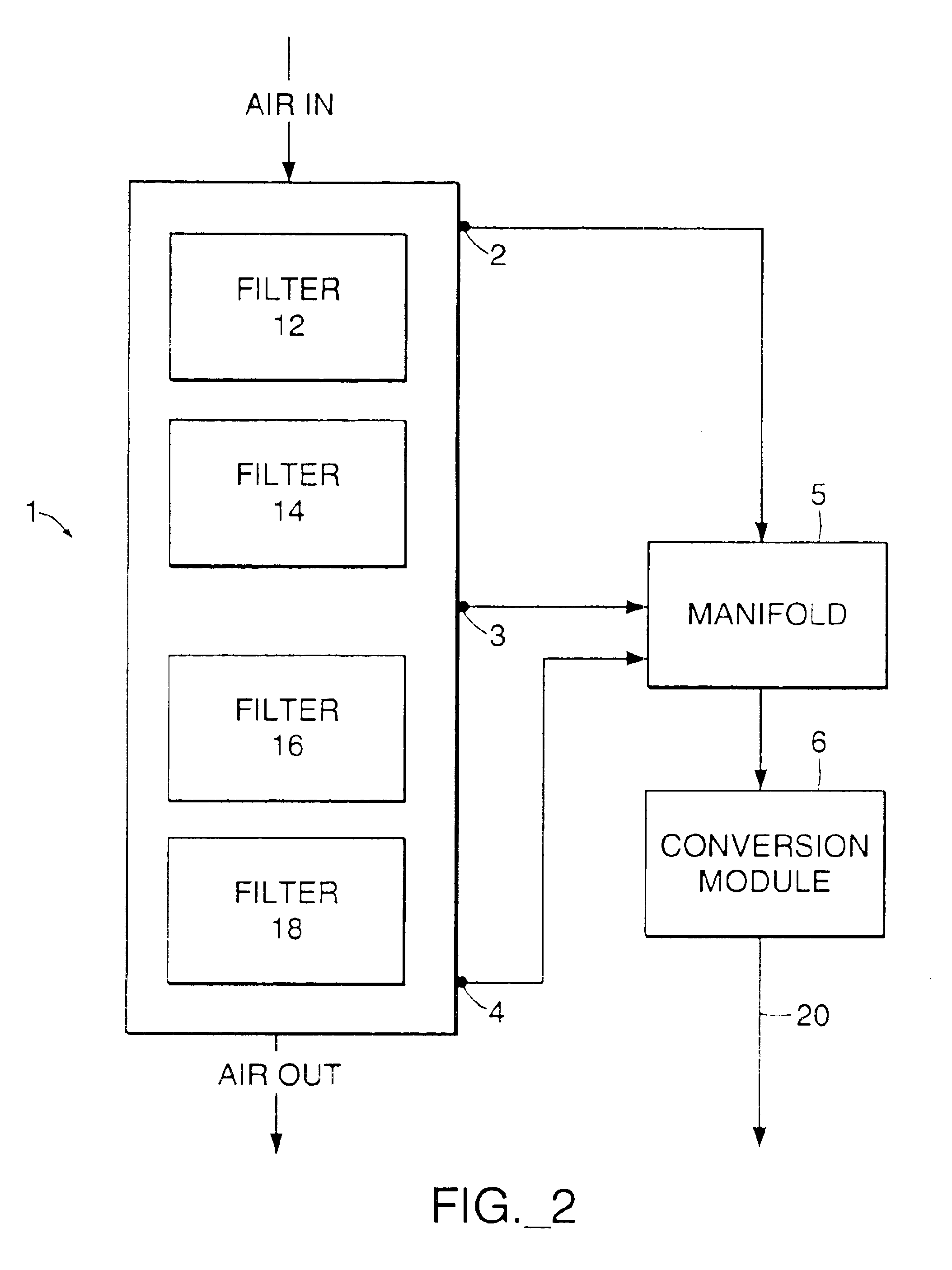Detection of base contaminants in gas samples
a technology of base contaminants and gas samples, which is applied in the calibration of gas analysers, instruments, and analysis using chemical indicators, etc., can solve the problems of inapplicability of the measurement of total fixed nitrogen species, unsatisfactory photolithographic processes, and ammonia measurement,
- Summary
- Abstract
- Description
- Claims
- Application Information
AI Technical Summary
Benefits of technology
Problems solved by technology
Method used
Image
Examples
Embodiment Construction
In FIG. 1, a photolithography tool cluster is shown for the production of semiconductor wafers. The cluster consists of two tools, a stepper 8 and a track 9. A wafer processed by the cluster is coated with photoresist in the track 9, transferred to the stepper 8 where the coated wafer is exposed to ultraviolet radiation passing through a reticle, and then transferred back to the track 9 where the exposed photoresist is developed. Each of these tools 8, 9 is joined to a separate clean air filtration system, 1 and 1a, respectively. Each filtration tower comprises a metal enclosure 10 and a set of spaced apart chemically-active filter stages 12, 14, 16, 18 installed in series within the enclosure. As depicted in FIG. 1, the air enters at 20, at the top of the tower, the air being supplied from either outside the fabrication facility or from within the facility, or from within the clean room or the tool itself. This system and its operation are more fully described in U.S. patent applic...
PUM
| Property | Measurement | Unit |
|---|---|---|
| pressure | aaaaa | aaaaa |
| pressure | aaaaa | aaaaa |
| pressure | aaaaa | aaaaa |
Abstract
Description
Claims
Application Information
 Login to View More
Login to View More - R&D
- Intellectual Property
- Life Sciences
- Materials
- Tech Scout
- Unparalleled Data Quality
- Higher Quality Content
- 60% Fewer Hallucinations
Browse by: Latest US Patents, China's latest patents, Technical Efficacy Thesaurus, Application Domain, Technology Topic, Popular Technical Reports.
© 2025 PatSnap. All rights reserved.Legal|Privacy policy|Modern Slavery Act Transparency Statement|Sitemap|About US| Contact US: help@patsnap.com



